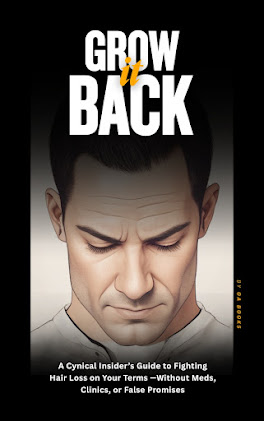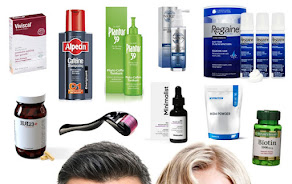While summer is synonymous with sunshine, beach trips, and longer days, it can also bring an unwelcome surprise: increased hair loss. Both men and women may notice more hair in the shower drain, on their pillows, or in their hairbrush during the warmer months. But why does this happen, and more importantly, how can you fight back with natural, effective solutions?
Let’s dive into the reasons summer contributes to excessive shedding and explore some holistic hair care remedies — including the popular HR23+ hair supplement — to help keep your strands healthy and strong.
The Link Between Summer and Hair Loss
Hair loss isn’t limited to winter stress or hormonal changes — it’s a year-round concern. However, many people report noticeably higher rates of shedding during the summer. Here’s why:
1. Increased UV Exposure
The sun’s UV rays don’t just affect your skin — they also damage the scalp and weaken hair shafts. Excessive sun exposure can dry out hair, strip it of natural oils, and cause breakage or brittleness. Worse still, UV radiation can harm scalp cells and disturb the hair growth cycle.
2. Sweating and Scalp Build-Up
Heat causes more sweating, especially on the scalp. Sweat mixes with oil, dirt, and hair products to clog pores and follicles. This creates an environment ripe for bacterial or fungal growth, which can weaken the follicles and lead to inflammation — a common precursor to hair loss.
3. Chlorine and Saltwater Damage
Summer is pool and beach season. Chlorine from swimming pools and salt from ocean water are both harsh on the hair. These elements dehydrate hair strands, weaken keratin (the protein that makes up hair), and strip away protective oils. Over time, this leads to increased breakage and thinning.
4. Seasonal Hair Shedding
Humans, like many mammals, experience seasonal shedding. A study in Dermatology found that we may lose more hair in late summer due to the natural hair cycle. Hair tends to enter the telogen (resting) phase during summer, which can lead to shedding around 2-3 months later — often peaking in late summer or early autumn.
5. Diet and Dehydration
Hot weather often causes a shift in diet — lighter meals, more sugary drinks, and sometimes insufficient hydration. If your body lacks essential nutrients or water, hair is one of the first areas to suffer. Dehydration affects scalp circulation and nutrient delivery to the follicles, potentially stalling growth.
Natural Hair Care Options to Fight Summer Shedding
The good news? There are natural, effective ways to help mitigate hair loss during the summer months. Here are some strategies to support healthy hair growth — from external treatments to internal nutrition.
1. HR23+ Hair Supplement
One of the most recommended natural options is HR23+, a leading multi-functional supplement designed to support healthy hair growth in men and women. It’s packed with vitamins, minerals, amino acids, and plant extracts known to promote follicle function and reduce excessive shedding.
Key ingredients include:
-
Biotin – Supports keratin production and scalp health.
-
Saw Palmetto – Helps block DHT, a hormone linked to male and female pattern baldness.
-
Zinc and Iron – Crucial for follicle repair and nutrient transport.
-
MSM and Silica – Enhance hair strength and shine.
Users often report noticeable improvements in hair thickness, reduced fall, and faster regrowth within 2-3 months of consistent use. HR23+ is also free from harmful chemicals, making it a safe, natural supplement for year-round use — but especially valuable during the hair-stressing summer season.
2. Aloe Vera Scalp Treatments
Aloe vera soothes sunburned scalps, reduces inflammation, and has antifungal properties. Applying fresh aloe gel to the scalp 1-2 times a week can help calm irritation and promote a healthy hair growth environment. It also hydrates dry strands naturally.
3. Cold Water Rinses
Hot showers can strip away your scalp's natural oils. Switching to cooler water when rinsing hair helps close the hair cuticles, retain moisture, and improve shine. It also reduces sweat stimulation, helping to keep the scalp clean.
4. Herbal Hair Oils
Natural oils like rosemary, peppermint, argan, and castor oil can nourish the scalp and strengthen roots. Rosemary oil, in particular, has been shown to be as effective as minoxidil in promoting hair regrowth when used consistently over six months.
Try massaging a blend of rosemary oil and coconut oil into your scalp two to three times a week. This boosts circulation, supports follicle health, and provides a cooling, refreshing effect — perfect for summer.
5. Wear Protective Headgear
Wearing a wide-brimmed hat or scarf when outdoors shields your scalp from harmful UV rays. This simple habit prevents sun damage and helps maintain scalp moisture levels. Look for hats made from breathable, natural fabrics like cotton or linen.
6. Eat a Hair-Friendly Diet
A summer diet rich in antioxidants, vitamins, and lean proteins helps fuel hair follicles. Prioritize:
-
Berries – High in vitamin C for collagen production.
-
Spinach and Kale – Rich in iron and folate.
-
Eggs – Packed with biotin and protein.
-
Nuts and Seeds – Great sources of zinc and omega-3s.
Drink plenty of water daily to stay hydrated and keep nutrient delivery to your scalp optimized.
7. Scalp Exfoliation
Just like your face, your scalp needs exfoliation. Use a gentle scalp scrub or a DIY mixture of sugar and olive oil once a week to remove dead skin cells and product buildup. This promotes better absorption of nutrients and healthier follicle function.
Final Thoughts
Summer may come with its fair share of hair woes, but with the right precautions and natural remedies, you can minimize shedding and maintain strong, vibrant hair all season long. Embrace a well-rounded hair care approach that protects from environmental damage, supports your scalp, and nourishes your body from the inside out.
And if you're looking for an effective all-in-one solution to give your hair that extra support during summer, HR23+ is a standout choice. With its powerful blend of natural ingredients and proven results, it offers a safe and effective way to combat seasonal shedding and restore confidence — one strand at a time.





















